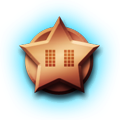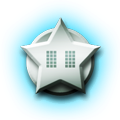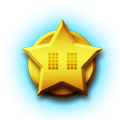About
The Story of LingoBot
LingoBot is a project of passion.
I’ve often told people that if nobody else uses LingoBot, that’s ok, because at least I would get good use out of it.
My interest in foreign language learning started when I was traveling around Thailand in 2003.
But this story starts in 2011 when I was traveling around Europe and I got interested in learning the languages of the countries I was visiting. I tried essentially all the best methods and technologies, including: Anki, Rosetta Stone, Pimsleur, multiple apps, and various books.
I thought that Spaced Repetition Systems (SRS) like Anki were a great advance in language learning, but there didn’t exist an app that did what I wanted. Although Anki provided a good framework, you had to create the content yourself. I found that bad content could do more harm than good. And good content creation took so much time that it greatly limited the potential of SRS.
In May 2012, I had an epiphany: I could create a language learning tool better than anything else on the market. I would work with professional language teachers to create the perfect content. For each word, I would incorporate images, native audio, and sentences. And I would put it all in a fun framework with game principles that would add to the engagement of the user.
I felt that it was something I could do, but actually implementing it was much harder than I expected. I spent long hours and lots of money on the project. And it was hard finding enough time since I had a full time job and other projects I was working on.
I had a working version of LingoBot by August 2013. I demoed it to about 50 people. It featured 2500 Russian words of content created with an excellent Russian language teacher, professional images, and native Russian speaker voice talent audio.
I was to be the lab rat to try it out. I traveled to Russia and enrolled in the Russian language program at St. Petersburg State University. My plan was basically to not do any studying besides working with LingoBot so I could compare my progress to others who didn’t get to use LingoBot.
It turned out to be extremely effective, and I was able to keep up with the difficult course despite doing almost no homework and even missing many classes.
But with all of the testing, I also learned how things had to be improved. For example, the original idea was to learn the top 2500 most common words in frequency order. It sounds highly efficient in theory, but it’s actually problematic in practice since the most frequent words are dominated by tricky functional words which are not suited to this format.
I also learned that there are real limits to how many words are optimal for a set of SRS flash cards. I thought more was better, but in practice, for most learners, the reviews that pile up from such a large amount of words eventually become a crushing chore causing them to give up.
I went back to work on creating the improved version. It’s now been almost 3 years in the making. But I believe that I have finally completed what I started out to do. I hope you get as much value out of LingoBot as I do.
-Daniel Peterson (LingoBot creator)



No Comments | 02/21/2015

